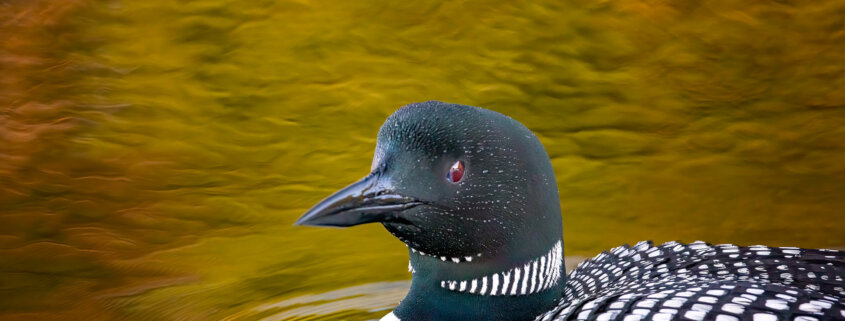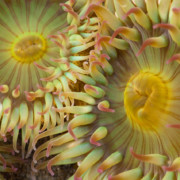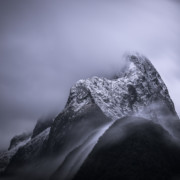Creative Nature Photography Ideas for Every Photographer
We’ve all been there. You scout out the nature photography location, plan the time of the day for the golden hour photography light, and visualize the shot you want to bring home. All this planning—the early morning alarm clock, the drive to the right place, the anticipation of getting the shot you’ve dreamed of—and then the light you had hoped for doesn’t happen. Now what? Do you pack up and go home? How do you find photographic inspiration in nature when you’re faced with disappointment?
But don’t let the lack of perfect light smother your creative spark. With a good dose of creativity and some creative photography techniques, you can still capture inspiring images. Here are some ideas for creative photography in nature when the conditions aren’t cooperating.
Use Intentional Camera Movement in Nature Photography
Using slow shutter speeds in nature photography to capture motion is particularly effective when photographing waterfalls, rivers, or moving clouds. But you can also combine slow shutter speeds with intentional camera movement (ICM) to create a sense of flow and abstract beauty in your photos.
ICM is especially effective when photographing colorful landscapes or scenes with strong vertical or horizontal lines—such as a forest of birch trees or tall grasses blowing in the wind. This photo below of a breezy birch forest became one of my favorites because intentional camera movement created an impressionistic nature image that conveyed the windy conditions that day.
By experimenting with different shutter speeds and directions of movement, you can create unique and dynamic results. Abstract landscape photography with ICM is a powerful way to express mood when the light isn’t ideal.
Look for Patterns and Shapes
Nature is full of repetition, symmetry, and organic patterns that can provide fresh inspiration. From the fractals in a leaf to ripples on a lake, these natural designs are perfect subjects for creative composition in nature photography.

Bird Photography with background textures to enchance the mood – Camera Setting: 1/1600s@f8, ISO 800
For example, reflections on a Michigan lake provided both texture and mood when photographing a loon. By using a fast shutter speed, I froze the movement of the water while still highlighting its colorful surface.
Tip: When photographing wildlife, such as birds, consider the background textures in bird photography to enhance mood and storytelling. Strong shapes, colors, or reflections can transform an ordinary shot into something memorable.
Try Black & White Nature Photography
When the colors of a scene feel flat or uninspiring, black and white photography in nature can open new creative possibilities. By removing color, your composition emphasizes contrast, textures, and patterns.
During a dive in Indonesia, I encountered a massive underwater school of jacks—what’s often called a “jack tornado.” I knew the story would be stronger in black and white because it highlighted the shape, light, and movement of the school without distraction.
Black and white underwater photography and monochrome landscape photography can create timeless images that focus on mood and structure rather than color.
Focus on Macro Photography Subjects
When the light isn’t ideal for landscapes, turn your attention to the smaller world with macro photography in nature. A macro lens reveals fine details and textures that are often overlooked: dewdrops on spider webs, patterns on leaves, or the intricate design of an insect’s wings.
On one outing, the rushing stream I had hoped to photograph was reduced to a trickle. Instead, I turned to macro photography of forest details and captured dew-covered spider webs.
Tip: Macro photography often involves shallow depth of field. Pay attention to where you place your focus to ensure that the most important details are sharp. Experiment with creative focusing techniques for macro photography to control how much of the subject remains in focus.
Try New Creative Photography Techniques
When nature doesn’t cooperate, it’s the perfect time to experiment. Try:
- Long exposure photography for silky water or cloud movement
- Multiple exposure photography in nature to layer creativity into a single frame
- Creative focusing techniques to isolate subjects
- Bird photography with motion blur to show movement instead of freezing it
For example, when photographing a painted bunting, I lowered my shutter speed to capture wing blur during a mating display. A higher shutter speed would have frozen the wings and lost the sense of energy.
Understanding your subject’s behavior combined with mastery of your digital camera settings for creative photography allows you to adapt quickly and tell better stories through your images.
Be Prepared for the Unexpected in Nature Photography
Sometimes the best shots are the ones you don’t anticipate. That’s why being ready with your camera is essential for capturing unexpected nature photography moments.
On a dive trip to Roatan, I witnessed a rare event: barrel sponges spawning. Female barrel sponges release eggs while male sponges release sperm into the water column. This spectacle lasts only about an hour and occurs just a few times a year.
Had I not been prepared, I would have missed this extraordinary opportunity for underwater macro photography of coral reefs.
Final Thoughts
The next time you’re out photographing and the conditions aren’t what you imagined, don’t pack up too soon. Creative outdoor photography techniques like intentional camera movement, macro photography, and black & white conversions can spark inspiration when the light doesn’t cooperate.
Remember, creative photography ideas for nature photographers often come from experimentation. Push the limits of your camera, explore new subjects, and stay open to the unexpected. You may just come home with an image more unique than the one you originally envisioned.
Original Article Published in October 2018.














